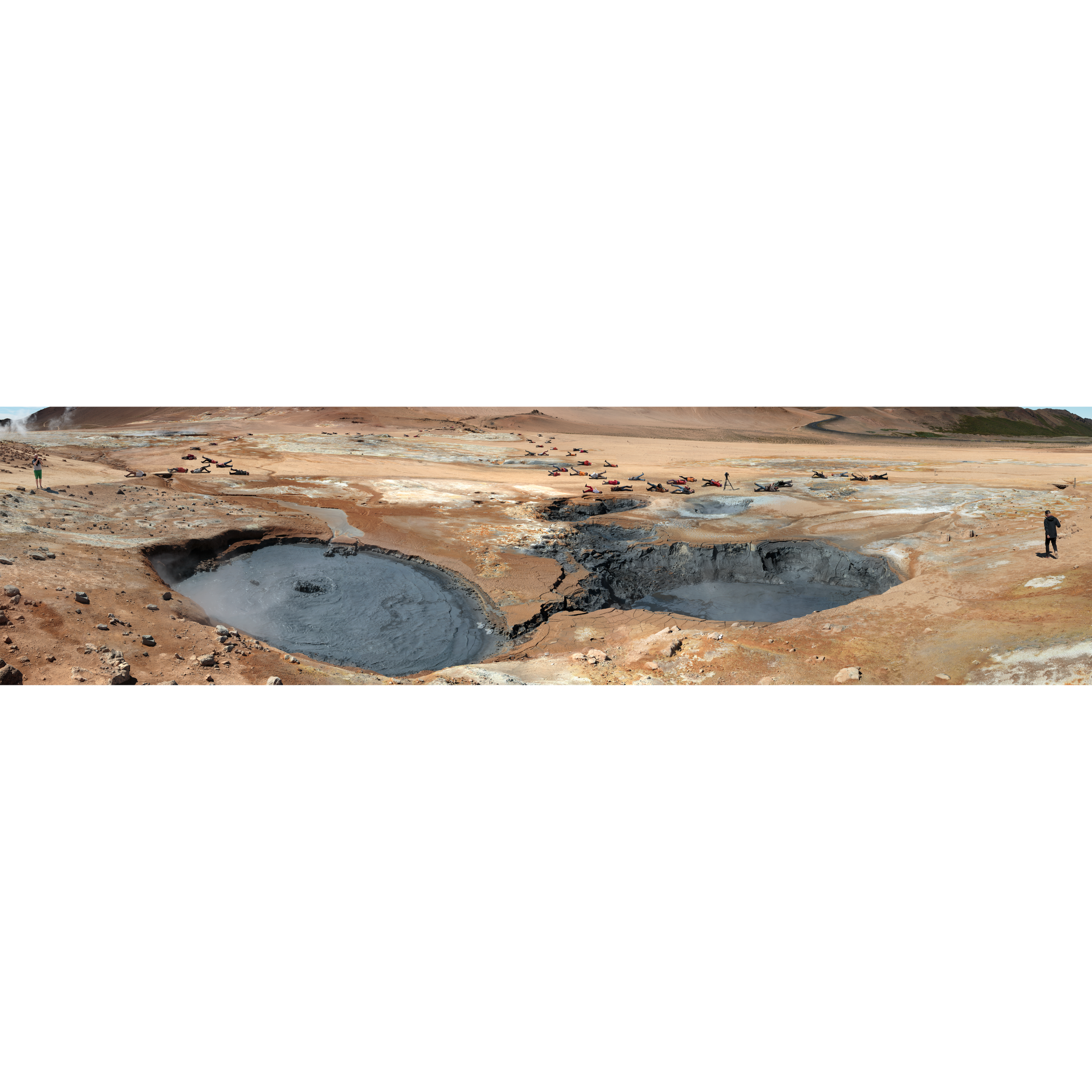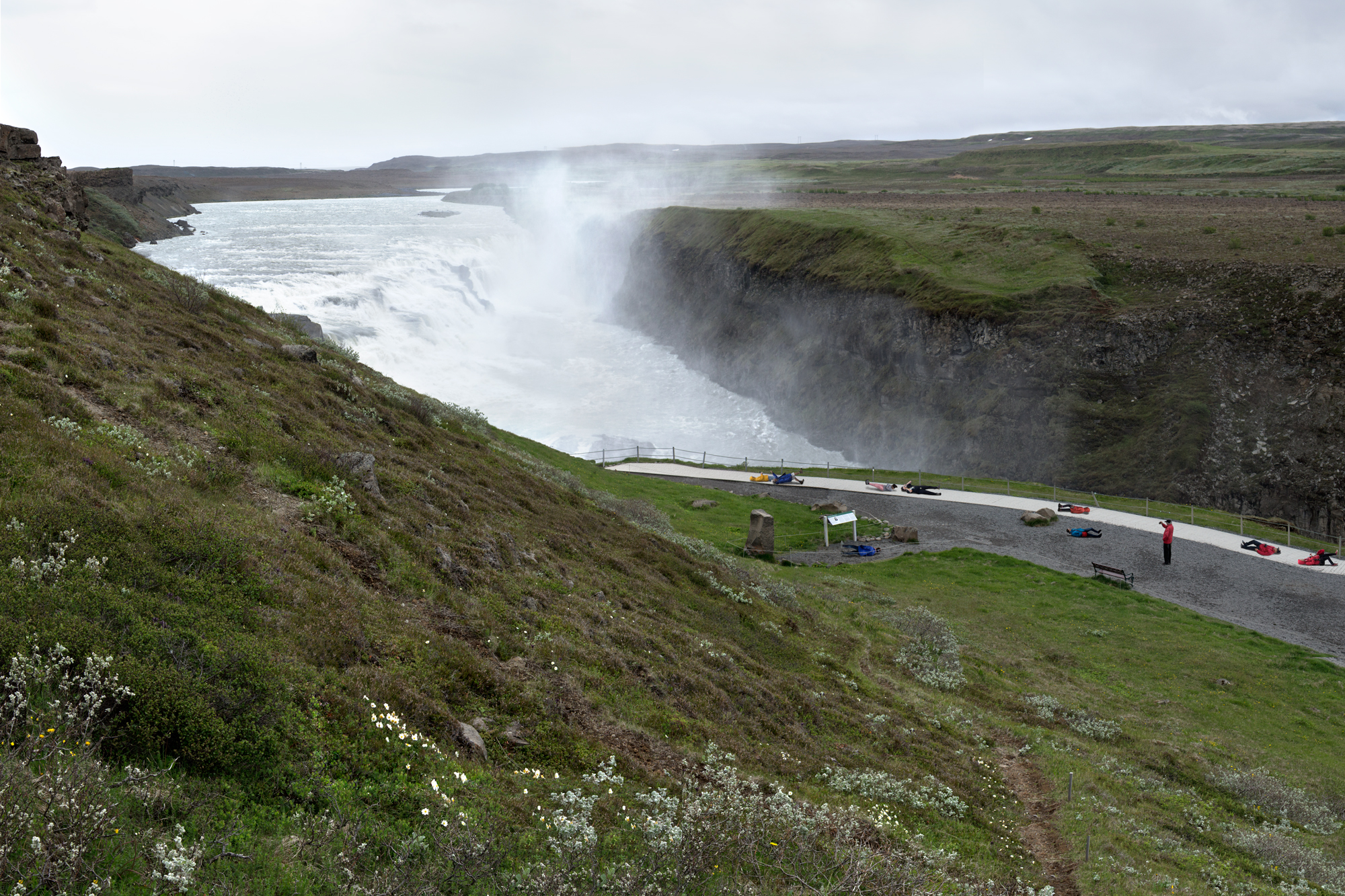Still
2015-2017
All of this we get exactly as much in hunting with the camera as in hunting with the rifle; and of the two, the former is the kind of sport which calls for the higher degree of skill, patience, resolution and knowledge of the life history of the animal sought.
Theodore Roosevelt, “The Camera Versus the Rifle” (1901)
Iceland’s tourism board describes their natural landscapes as a contrast between majestic mountains, picturesque lagoons, catastrophic glaciers, and raging torrential rivers. Close to a million tourists overrun Iceland every year hoping to capture and bring home these landscapes in the form of photographs. In the photographic series Still I explore the paradox that arises when hundreds of tourist bodies armed with cameras around their necks invade these remote landscapes hoping to capture a sense of wilderness, isolation, and untouched space. In this series I become the hunter following tour buses, shooting tourists, and flattening their bodies into a two-dimensional space as they stream towards the waterfalls, glaciers, and lava fields.
The series Still comprises twelve large-scale archival pigment prints created from photographs captured at different sites in Iceland. Each work is constructed from dozens of images of the landscape combined with images of tourists taken at the same location. In each image I move and rotate the bodies, digitally repositioning them like theatrical props or mannequins. In the supine position their bodies become vulnerable and suggestive of the aftermath of a disaster. In Nine down in Gullfoss a single shooter stands in the middle of a verdant landscape framing a photograph of a waterfall while nine bodies lie scattered around him. The violent act that precipitated this disaster is unclear—the only weapon visible is the camera, wielded by the tourists and myself. In this moment the camera becomes the gun, imbued with the power of colonialism to immobilize and bring home trophies from a land that is not one’s own. In images that recall the immense landscapes and the frozen bodies of the turn-of-the-century dioramas at the American Museum of Natural History, this series asks what is owned or possessed when we photograph a foreign space.











